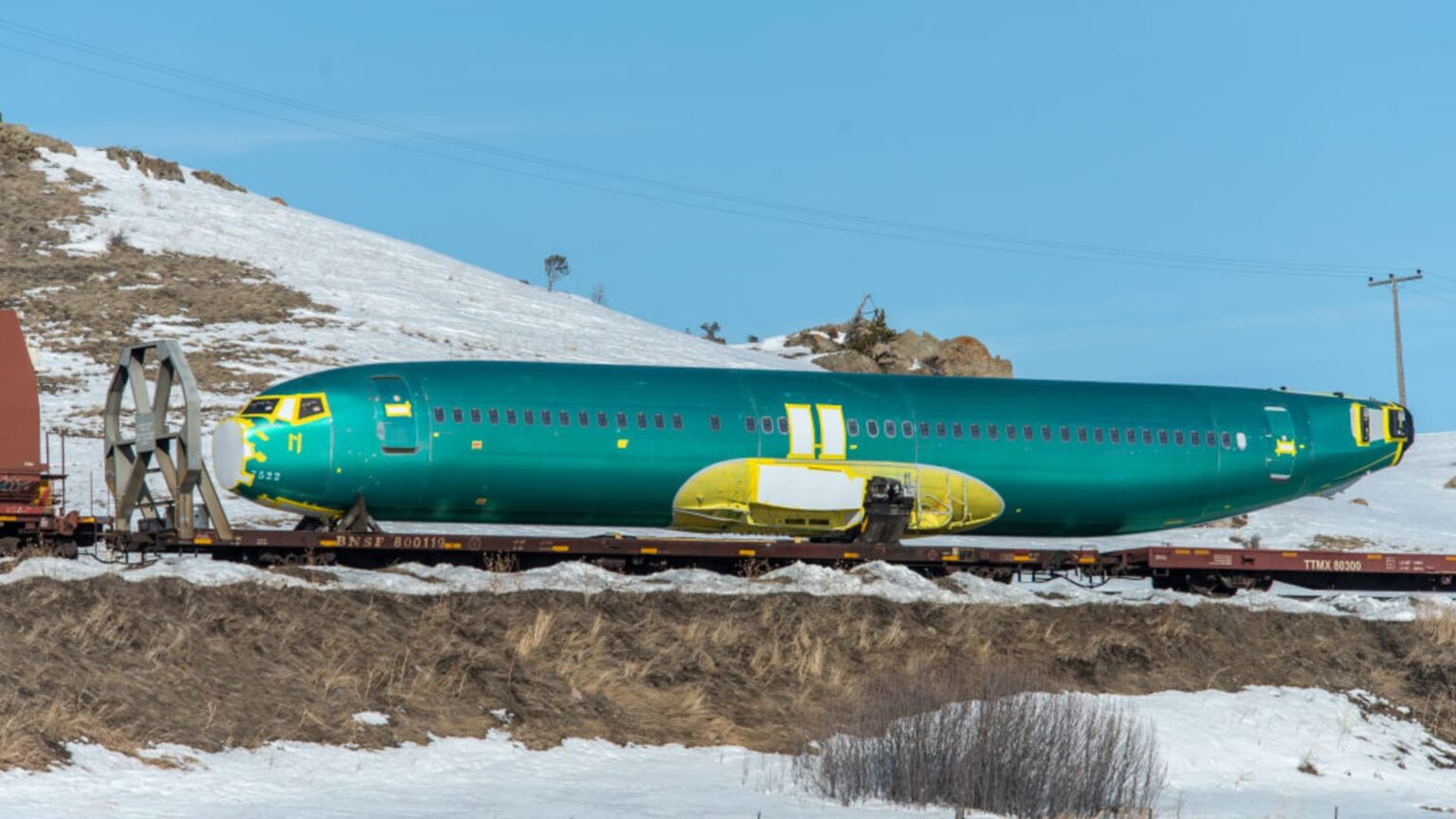Boeing 737 Max 8 fuselages manufactured by Spirit Aerosystems in Wichita, Kansas are transported on a BSNF train heading west over the Bozeman Pass March 12, 2019 in Bozeman, Montana.
William Campbell | Corbis News | Getty Images
Boeing CEO Dave Calhoun and other top company leaders are scheduled to meet with the Federal Aviation Administration on Thursday to present a quality improvement plan showing better staff training and production practices at its factories.
The FAA ordered the report following a near-catastrophic blowout of an airplane door panel on a new 737 Max 9 earlier this year.
At the end of February, FAA Administrator Mike Whitaker, who is scheduled to join the meeting with Boeing’s leadership on Thursday, gave the company 90 days to come up with a quality improvement plan after the incident on an Alaska Airlines flight in early January.
Federal safety investigators found that bolts appeared to not have been installed to hold the panel in place before the plane was delivered to Alaska Airlines.
The FAA also barred Boeing from increasing 737 Max production until the agency was satisfied with Boeing’s quality control improvements. That limitation isn’t likely to be reversed on Thursday.
The crisis has again tarnished Boeing’s reputation, opened it to more federal scrutiny and forced it to slow 737 Max output. The aircraft delays have meant airline customers like United and Southwest have had to change their growth plans.
Boeing Chief Financial Officer Brian West on May 23 said that the company expects to burn cash this year instead of generating it. For the current quarter alone, Boeing expects to use about $4 billion.
Boeing executives have acknowledged that the 90-day plan won’t turn things around immediately.
“The 90-day plan … is not a finish line,” West said at an investor conference last week. “We look forward to the feedback that we’ll get after next week.”
Boeing’s update Thursday is expected to detail its improvements to staff training, such as simplified instructions for mechanics and tool availability, as well as the reduction of so-called traveled work, where required tasks on the planes are done out of sequence.
The manufacturer is also set to explain more about its factory “stand-downs,” in which it paused work to have conversations about potential improvements on production lines with employees. The manufacturer implemented those brief work pauses in the months after the Alaska Airlines door plug blowout.
Calhoun, who said he would step down by the end of the year, told staff in April that the company has received more than 30,000 “ideas on how we can improve” and that “speak up submissions” — concerns raised by staff — and comments were up 500% over 2023.



